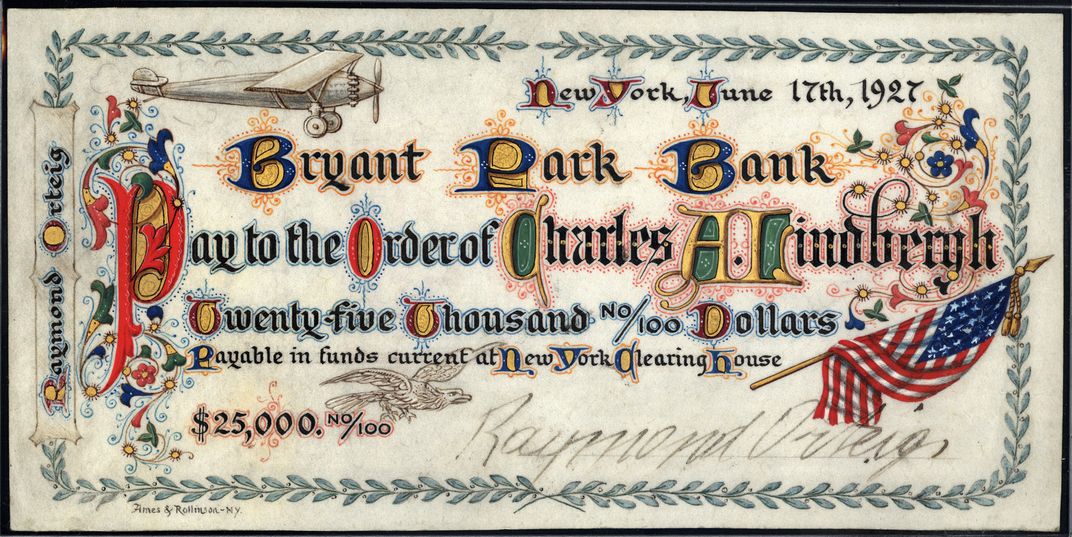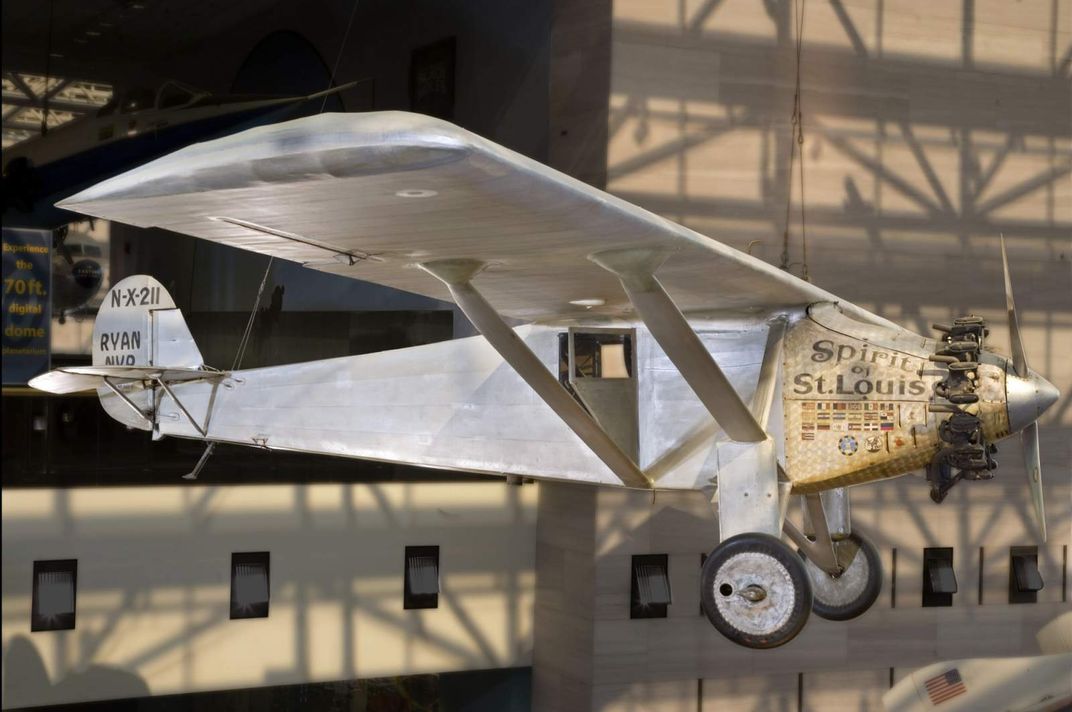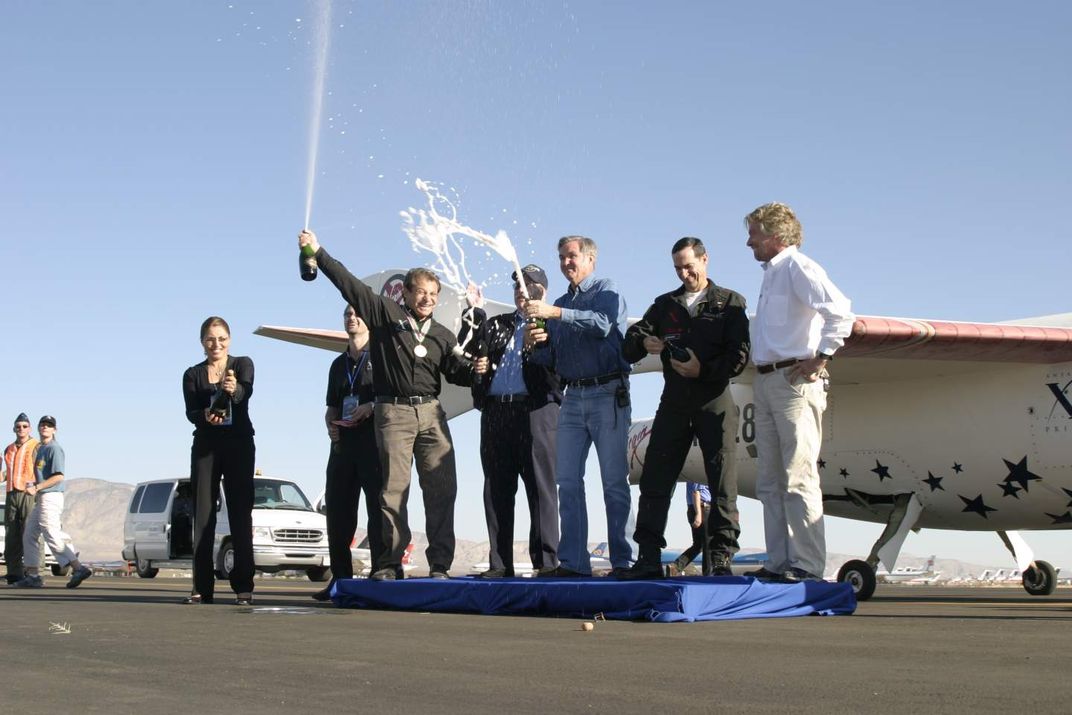What Are the Economic Incentives to Invent?
Prizes and patents may fulfill different needs, but together they fuel innovation
/https://tf-cmsv2-smithsonianmag-media.s3.amazonaws.com/filer/49/ff/49ff338f-3858-4910-acdb-2172e789a467/nasm-si-94-8819.jpg)
In 1919, inspired by the relative success of Britain’s several aviation challenges, French-born American hotelier Raymond Orteig set forth the terms, conditions and reward for an aviation contest of his own. “As a stimulus to the courageous aviators,” Orteig announced, “a prize of $25,000 [about $350,000 today] to the first aviator of any Allied country crossing the Atlantic in one flight, from Paris to New York or New York to Paris.”
For five years, no one claimed the contested prize. Orteig extended the deadline and, within the next two years, nearly ten promising teams were racing to complete the flight to win the purse money. While most aviators choose the standard biplane aircraft model, 25-year-old Charles Lindbergh experimented with the then unproven monoplane. Six accomplished pilots would lose their lives before Lindbergh became the 19th aviator to cross the Atlantic—and the first to fly nonstop from New York to Paris—in May 1927.
Excitement over the Orteig Prize spilled over into all sectors of society. Roughly 30 million people turned out to see Lindbergh and his plane, The Spirit of St. Louis, as he toured the United States. In 1927, applications for pilot’s licenses climbed 300 percent and the registration of aircrafts was up more than 400 percent.
Adventurers across the world donned their flight gear, embarking on never-before-taken routes in previously untested plane models. A quick succession of innovation soon followed. The year 1928 saw the one mile flight of the first rocket powered glider. In 1929, the first jet-assisted plane successfully took off, and the next year, the first electro-mechanical flight simulator was introduced to flight students and amusement park goers across the nation.

In essence, the Orteig Prize jumpstarted a rush of invention in the nascent aeronautics industry, sparking a fever of innovation. Yet despite its success, similar incentives failed to catch on and subsequently fell out of fashion. That is until 1995, when a group of philanthropists set forth the terms, conditions and reward for a new contest: the $10 million Ansari XPRIZE for private spaceflight. Awarded in October 2004, the Ansari XPRIZE jumpstarted a brand-new $2 billion private space industry. Since then, the XPRIZE Foundation has launched 17 prizes, worth more than $140 million, to encourage technological breakthroughs in various scientific domains.
The XPRIZE Foundation is hardly the only group resurrecting the art of prize incentives. In recent years, private and public entities have similarly used the internet as a facilitator of ideas and collaboration, a catalyst for problem-solving. Netflix and Overstock.com have both awarded people or teams for improving their site technology. The Pentagon, in 2005, offered a $2 million prize to the inventors of a race-winning robotic car as part of the DARPA Grand Challenge. In 2010, the Obama Administration launched Challenge.gov, a hub for federal prize competitions that help government agencies crowdsource solutions from the public and occasionally offer monetary rewards. And, just this week, the Breakthrough Prizes awarded a total of $22 million—gifted by several Silicon Valley heavyweights—to nine researchers responsible for major achievements in life sciences, fundamental physics and mathematics.

With this recent prize renaissance, the Lemelson Center for the Study of Invention and Innovation at the Smithsonian’s National Museum of American History recently hosted a panel titled “The Power of Patents and Prizes in American Inventing.” The panel, moderated by the center’s director Arthur Daemmrich, included Josh Malone, the inventor of Bunch O Balloons; and three prominent scholars, Zorina Khan of Bowdoin College; Tom Nicholas of Harvard Business School; and Adam Mossoff of George Mason University’s Antonin Scalia Law School.
The panelists were tasked with using historical anecdotes and contemporary experiences to weigh the advantages and disadvantages of the resurrected prize process alongside the U.S. patent system, which has been around since 1790.
To be granted a patent, an inventor offers up the specifics of their new technology to the United States Patent and Trademark Office in the form of an application. Ideas or suggestions are not patentable, given that they are not “useful.” A product’s usefulness, in this case, is proven by its novelty and its existence beyond an inventor’s imagination.
/https://tf-cmsv2-smithsonianmag-media.s3.amazonaws.com/filer/b0/63/b0637aa5-c7ed-4c30-89fa-2581adc8ac64/11490h.jpg)
Tom Nicholas believes a patent functions as a “fundamental tradeoff.” In exchange for revealing the methods of innovation to the public, inventors gain a 20-year property right. A patented inventor has the right to exclude others from making, using or selling their technology. However, this does not ensure that others will not try duplicating it, domestically or globally. With the increasing complexity of products on the market, one product can consist of hundreds of patented technologies, any one susceptible to copying.
As the panel discussed, patents and prizes aren’t mutually exclusive. Innovators can enter a prize competition with their own patented technology. Prizes either completely substitute or complement the existing patent. In the terms of some prize-awarding competitions, winners are required to completely transfer their patent-granted intellectual property rights to the prize sponsor in exchange for the sum of cash. Most prizes, however, including many XPRIZES, allow innovators to keep their property rights while also licensing the rights out to the competition’s sponsor.

“Prizes work in instances where you really want to incentivize inventors to do things they wouldn’t otherwise do,” Nicholas says. In scientific and technological domains most needing of innovation but low on private investment, putting forth purse prizes, or non-monetary honors, can be a way to pave necessary progress.
To Khan, author of the forthcoming book Inventing Ideas: Patents and Innovation Prizes in the Knowledge Economy, “[Prize-awarding] panels simply do not have the ability to replicate what the [patent-driven market] does.” These panels, she says, do not get the price of inventions right. They grant prizes to innovations later proven useless and cannot offer a necessary element of transparency.
In 2006, Netflix challenged computer programmers to make their movie recommendation algorithm 10 percent more accurate. Given that all one needed to compete was programming knowledge, a computer and Wi-Fi, 30,000 aspiring coders took up the challenge. Three years later, the company awarded $1 million to BellKor’s Pragmatic Chaos, a collective of AT&T colleagues and engineers from three other countries. Yet, later, they revealed that the team’s solution was never implemented.
Was the prize a failure? Perhaps, but the three years of online collaboration and work by the competitive programmers did breed some new coding breakthroughs and influenced a fleet of future online data-sharing prize challenges.
In Nicholas’s mind, the power of a prize might not be the money. By setting out a purse competition, committees encourage collaboration among people who each hold, in their immense knowledge, one piece of the proposed puzzle. Together, individuals can complete a challenge, and share in the reward—be it a monetary sum or the esteem garnered in an industry that has proven hard to enter.
Netflix allowed the winners to maintain their intellectual property and only license out the technology to the company, an instance where the incentives of prizes and patents complement each other.
It’s a perfect world, Nicholas argues, when patents and prizes can fulfill different needs.
The prizes allow for once in a lifetime moonshot ideas to be tested, and patents ensure the market remains a steady force.